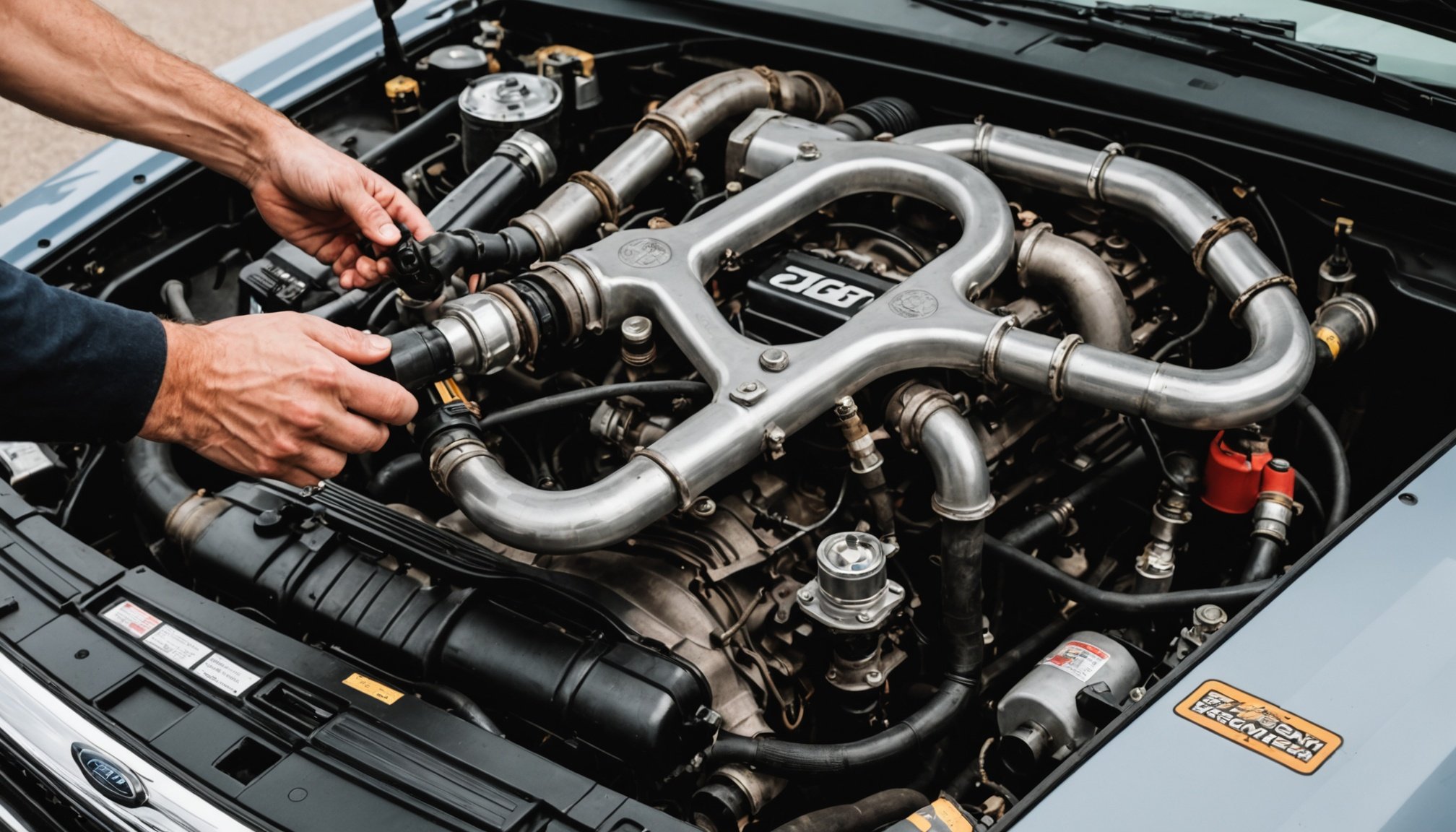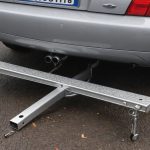Optimizing Your Vehicle’s EGR System for Maximum Efficiency and Longevity: A Comprehensive Guide
Understanding the EGR System
Before we dive into the nitty-gritty of optimizing your vehicle’s Exhaust Gas Recirculation (EGR) system, it’s essential to understand what the EGR system does and why it’s crucial for your engine.
The EGR system is designed to reduce nitrogen oxide (NOx) emissions by recirculating a portion of the exhaust gases back into the engine’s combustion chamber. This process helps in lowering the combustion temperatures, which in turn reduces the formation of NOx. Here’s a detailed look at how it works:
Also read : Ultimate guide to windshield wiper replacement: achieve perfect clarity during stormy weather
- Gas Recirculation: The EGR system takes a portion of the exhaust gases and redirects them back into the engine’s intake system. This dilutes the oxygen in the intake air, which lowers the peak combustion temperatures[4].
- Emissions Control: By reducing NOx emissions, the EGR system helps vehicles comply with stringent emissions regulations. However, this system can also introduce several issues that affect engine performance and longevity.
Common Issues with EGR Systems
While the EGR system is vital for emissions control, it can also lead to several problems that impact your vehicle’s performance and efficiency.
Carbon Buildup and Clogging
One of the most common issues with EGR systems is the buildup of carbon and soot within the EGR valve and the intake manifold. This can lead to clogging, which reduces airflow and engine performance.
Topic to read : Essential methods for evaluating vehicle frame integrity after an accident: your ultimate guide to comprehensive assessment
Increased Operating Temperatures
The recirculation of exhaust gases can also increase the operating temperatures within the engine. High temperatures can lead to premature wear on engine components and reduce overall efficiency[4].
Engine Efficiency and Performance
The EGR system can sometimes hinder engine efficiency and performance, especially in diesel engines. Here’s what you need to know:
- Fuel Consumption: The EGR system can lead to increased fuel consumption due to the reduced oxygen levels in the intake air. This can result in lower fuel efficiency and higher operating costs[3].
- Engine Light and Check Engine: Issues with the EGR system can trigger the check engine light on your dashboard. This is often due to problems like a clogged EGR valve or faulty EGR cooler[4].
Optimizing Your EGR System
To ensure your vehicle’s EGR system operates at optimal levels, here are some strategies you can implement:
Regular Maintenance
Regular maintenance is key to keeping your EGR system in good condition.
- Clean the EGR Valve: Regularly cleaning the EGR valve can prevent clogging and ensure smooth operation. This should be done every 40,000 km or as recommended by the manufacturer[5].
- Check and Replace Components: Regularly check the EGR cooler, EGR valve, and other related components. Replace them if necessary to prevent issues.
- Use the Right Fuel: Using the right type of fuel can help reduce carbon buildup. For diesel engines, using high-quality diesel fuel can make a significant difference.
EGR Delete Kits
For those looking to enhance performance, especially in heavy-duty or high-performance applications, EGR delete kits can be a viable option.
- What is an EGR Delete Kit?: An EGR delete kit removes the EGR valve and associated components, allowing for improved airflow and combustion efficiency. This can result in increased horsepower and torque output[4].
- Benefits of EGR Delete Kits:
- Increased Horsepower and Torque: By eliminating the EGR system’s inefficiencies, you can see a noticeable increase in engine performance.
- Enhanced Fuel Efficiency: Improved combustion efficiency can lead to better fuel mileage.
- Reduced Emissions: While it may seem counterintuitive, removing the EGR system can sometimes lead to lower harmful emissions due to better combustion processes.
Here is a detailed list of benefits and considerations for EGR delete kits:
- Increased Horsepower and Torque Output
- Improved airflow and combustion efficiency
- Advantageous for towing and hauling applications
- Enhanced Fuel Efficiency
- Better fuel combustion leads to improved mileage
- Reduced fuel consumption over time
- Reduction in Exhaust Emissions
- Lower harmful emissions due to better combustion processes
- Environmental benefits
- Potential Drawbacks
- May not comply with emissions regulations
- Requires careful installation and tuning
- Can lead to increased NOx emissions if not properly managed
Example: Flashark EGR Delete Kit
The Flashark EGR Delete Kit for the 6.7 Cummins engine is a prime example of how an EGR delete kit can enhance performance. This kit removes the EGR valve and associated components, leading to improved airflow and combustion efficiency. Here’s what users have reported:
- “With the Flashark EGR Delete Kit, I noticed a significant increase in horsepower and torque. My truck feels more responsive and powerful, especially when towing heavy loads.” – John D., Truck Owner
Advanced EGR Systems and Technologies
Modern vehicles often come equipped with advanced EGR systems that integrate various technologies to optimize performance and emissions.
Precision Turbochargers and EGR Management
Precision turbochargers, especially those integrated with EGR systems, play a crucial role in maintaining optimal combustion and minimizing emissions.
- Exhaust Gas Temperature Control: Precise control over exhaust gas temperatures is critical for turbocharger durability and performance. Advanced cooling methods and carefully engineered exhaust manifolds are essential for long-term reliability[2].
- EGR Flow Management: Precise control over EGR flow is necessary for maintaining optimal combustion and minimizing harmful emissions. This involves intricate engineering to manage variations in engine load and operating conditions[2].
BlueHDI Engine Technology
The BlueHDI engine technology used in some diesel engines is a good example of advanced EGR management. Here’s how it works:
- Double Circuit Cooling System: This system optimizes the engine’s operating temperature, reducing the risk of overheating and improving overall efficiency[5].
- SCR System with Double Dosing: The Selective Catalytic Reduction (SCR) system with double dosing ensures effective reduction of NOx emissions, complying with stringent emissions regulations[5].
Practical Insights and Actionable Advice
Here are some practical tips and advice to help you optimize your vehicle’s EGR system:
Regular Checks and Maintenance
Regularly check the EGR valve, EGR cooler, and other related components. Here’s a maintenance schedule you can follow:
- Clean the EGR valve every 40,000 km
- Check and replace the EGR cooler as needed
- Use high-quality fuel to reduce carbon buildup
- Monitor the engine light and check engine codes regularly
Consider Professional Help
If you’re not comfortable with DIY maintenance or if you’re considering an EGR delete kit, it’s best to consult a professional mechanic.
- “I tried to clean my EGR valve myself, but it didn’t solve the issue. A professional mechanic helped me diagnose and fix the problem, and now my engine runs smoothly.” – Sarah K., Car Owner
Compliance with Regulations
Always ensure that any modifications to your EGR system comply with local emissions regulations.
- “Before installing an EGR delete kit, make sure it’s legal in your area. Non-compliance can result in fines and other penalties.” – Mark T., Mechanic
Optimizing your vehicle’s EGR system is crucial for maintaining optimal performance, efficiency, and longevity. By understanding the common issues associated with EGR systems, implementing regular maintenance, and considering advanced technologies or modifications like EGR delete kits, you can ensure your engine runs at its best.
Here is a comparative table summarizing the key points discussed:
| Aspect | Standard EGR System | EGR Delete Kit | Advanced EGR Systems |
|---|---|---|---|
| Emissions Control | Reduces NOx emissions | May not comply with regulations | Complies with regulations using advanced technologies |
| Performance | Can hinder performance | Increases horsepower and torque | Optimizes performance through precise EGR flow management |
| Fuel Efficiency | Can reduce fuel efficiency | Enhances fuel efficiency | Optimizes fuel consumption through advanced cooling systems |
| Maintenance | Requires regular cleaning and checks | Requires careful installation and tuning | Integrates advanced technologies for reduced maintenance |
| Regulations | Complies with emissions regulations | May not comply | Complies with regulations using advanced technologies |
By following the tips and advice outlined in this guide, you can ensure your vehicle’s EGR system operates efficiently, enhancing both performance and longevity. Remember, regular maintenance and compliance with regulations are key to a well-functioning engine.






